El Salvador
Central AmericaLevel of surfing
Competent
Quality of surf
Good
Call code
503
Net code
sv
Area
21040
Coastline
307 km
Climate
Tropical; rainy season (May to October); dry season (November to April)
Hazards
Extreme Heat, Severe Storms, Coup / Civil Unrest
Best Months
October - December
Population
6948073
Currency
United states Dolalr (USD)
Time Zone
SIERRA (UTC-6)
Special Requirements
Lengthy VISA Process
introduction

The Flag of El Salvador
El Salvador is a small, Spanish Speaking Republic in Central America, though geographically it is part of the North American continent. It borders with Guatemala to its north and Honduras to it's east and has a coastline to the Pacific Ocean on its west and south. It is also the most populated nation of Central America.
The majority of its residents are of the Roman Catholic Christian faith at 83% with the most of the rest being Protestant Christians.
The local currency is the United States Dollar and it's capital city is San Salvador.
history
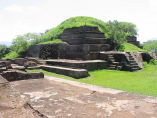
Guanaco; San Andres Pyramid; 01.06.2006
The civilization of El Salvador dates from around 1500 BC, according to evidence provided by the ancient structures of Tazumal in Chalchuapa.
During the mid sixteenth century the Spanish Conquistadors sought to extend their ruling over Central America and invaded the land known as Cuzcatlán. The first attack was led by Pedro de Alvarado in June 1524, though they failed and were forced to flee to Guatemala after many bloody battles. Two more invasions were necessary in 1525 and 1528 to bring the land into Spanish rule and be renamed El Salvador.
In 1811 an independence movement was consolidated due to the weakening of the Spanish military power due to the wars with Napoleonic France and Spanish ruling was removed, shortly afterwards El Salvador became a republic.
surfing

NASA: Satellite Image of el Salvador; 2002
PACIFIC OCEAN
A pitching deck, the creak of well worn timbers, the cracking of sail
and canvas...tied to the mast. Things have changed a little I guess
from when Jack London and Josef Conrad wrote their haunting Pacific
infused epics but it hasnt changed everythwhere. There are corners of
this earth where that mythos still holds true, and most of those
corners are here in the South Pacific.
The main source of swell here is from the intense lows that circle the earth south of Australia, these lows spin off northwards with blessed regularity, peppering the entire region with generous SE to SW groundswell from March to September. Australia and New Zealand see the bulk of these swells. These countries cast a very tall shadow across the rest of the Pacific and hence many other islands in their wake can suffer from swell difusion. December to February is cyclone season. Unpredictable cells can deliver swell in a 360 radius, lighting up rarely breaking reefs and points facing every conceivable direction.
The South Pacific trade winds are some of the most consistent in the world, generally from the East with slight seasonal variation. This is the largest Ocean on the planet and these winds easily generate regular rideable swell. Onshore conditions can be a problem on east facing coastlines but peeling yourself out for an early surf will usually bring some relief.
In the North Pacific it is the intense lows descending from the Aleutians that deliver NE to NW swells from October to March. Hawaii is ideally placed to make best use of this energy but other coastlines in the region have their own less publicised and far less crowded gems.
Jun to October also sees rarer hurricane swell radiate out from southern Mexico. This energy is often felt right throughout Polynesia. With so many energy vectors at work it is very hard not to find a wave in El Salvador. It's just a matter of finding the right one.
After the rain it shines, and El Salvador is rapidly establishing itself as a world class surfing destination. With years of political unrest behind them, the people have turned to tourism as the key to their future. Surf camps dot the pacific coast and the year round swell window will guarantee that you can find an uncrowded wave somewhere. Few other locations can boast the same regular passage of swell from both the north and south pacific, just make sure you get into the waves early during the wet season before the onshores and the rain blow the points into mush - save the late night beer sessions for another holiday.
travel
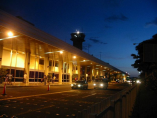
Guanaco; Comalapa Intl Airport; 01.06.2006
Travellers entering El Salvador require either a pre-issued visa or a tourist card to accompany their passport. Visas are granted from the El Salvador consulate or the tourist card can be purchased upon arrival for US$10. Though it is adviseable to check with your travel agent on the current visa status.
The international airport is located 45 minutes from the Capital City of San Salvador in Comalapa and you can get flights here from other Central American countries as well as the US and South America. Travellers from Europe will have to fly into one of these other areas first and get a connecting flight.
When travelling domestically around the country a car is a good option, the Pan American Highway traverses the country and is a pretty safe route. El Salvador does have a very complicated bus service that can be confusing though very, very cheap. Do take note that muggings and theft occurs quite frequently on packed buses here, take extra care of your valuables and belongings.
where to stay
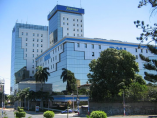
Guanaco; High rised buildings, San Salvador; 01.06.2006
There is a wide range of accommodation throughout El Salvador catering for the tourist traveller, many of which are luxury beach resorts that cater for your every need. In San Salvador you will find all the usual suspects when it comes to high end hotels such as Hilton, Sheridan, Radisson and Holiday Inn Etc.
Most surfers will opt to head for the La Libertad region where the are some specialized surf travel operators that will organise places to stay, surf tours and all manner of other activities if the surf craps out.
Where ever you choose to stay it will seem cheap to a western pocket, your money will go much further here.
what to pack

Johntex: Man sitting under beach umbrella; 9 March 2006
El Salvador is a tropical country, with warm weather all year round, there is a rainy season from May to October (so take an umbrella and pack accordingly) and a dry season from November to April. The coast is hot all year, so cotton shirts or blouses are best. Hat and natural fabrics (such as cotton or linen) clothes will be very useful. Light coat can become handy since some nights are fresher or you might get a bad weather. Make sure you take a good sunscreen (SPF 30+) and a good insect repellent.
Don't forget a backpack, that might be usefull if your planning to travel around or sail. Comfortable walking shoes or hiking boots are essential. And like everywhere else, better to bring on the medicines you are used to taking.
dangers and warnings
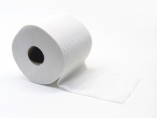
Brandon Blinkenberg; A roll of toilet paper; 29.06.2005
In El Salvador you must keep your wits about you and be vigilant to stay safe. It has one of the highest homicide rates in the world - make no mistake, crime is an issue here. In the cities use you instincts and stay clear on any suburbs or areas that appear usafe - they probably are. Avoid travelling alone when possible, most certainly at night and avoid exposing any belongings of value - iPods, cameras, watches etc. The police may not be of assistance either, in fact they have been known to act inappropriately towards female victims of crime. Be Careful.
Avoid eating from food vendors in the street, western stomachs are seldom prepared for the bacteria contained within these tasty morcels and only drinks water from bottles making sure the seal is intact before opening and consuming it
restaurants, shopping and nightlife
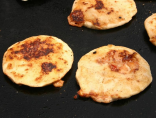
Bukele; Pupusas; 16.11.2005
Eating
The typical Salvadoran diet includes lots of rice and beans, seafood (particularly among those who live on the coast), and the most common Salvadoran dish, the famous Pupusa, a round corn tortilla filled with cheese and other elements, usually chicharon (shredded pork meat). It's widely agreed that the best pupusas in the country can be bought in Olocuilta, which you can get to along the highway on the way to the Comalapa airport.
There are also plenty of restaurants influenced from many cultures including Mexican, Italian, Chinese, spanish etc and all the major fast food joints are here i.e. McDonalds, Burger King, Subway, KFC to name but a few.
Shopping
The currency in El Salvador is the US Dollar.
All the largest shopping malls in El Salvador are located in the countries capital city of San Salvador. Here you can find the usual internationally recognised brand names of fashion clothing shops as well as upmarket restaurants.
If you're interested in purchasing locally crafted souvenirs, crafts and products then there is an alternative market every second Saturday in San José park in the San luis area.
Nightlife
For a good night out the most popular and trendiest area is La Zona Rosa where all the top end hotels are located such as the Sheraton and Hilton. The area isn't huge but it does house the most exclusive bars and nightclubs and some fantastic restaurants.
what to do when it's flat
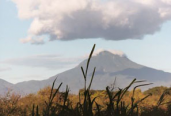
Yamenah; San Vicente volcanoe; 23.04.2007
If the surf runs out at Punta Roca and Los Cobanos then it's time to occupy idle hands and minds in other ways!! There are many boat excursions possible around the Gulf of Fonseca which include stopovers at the volcanic islands for an explore.
If you fancy a change of scenery then why not head inland for a few days to Lake Coatepeque. It's located in the western region at the foot of Santa Ana volcanoe and there are some great resort retreats there to treat yourself to. Here you'll also be able to leave for whitewater rafting and canoe trips as well as fishing and sailing.
Their is also lots of opportunity for hiking and trekking to some of the ancient archaeological sites in El Salvador with guided tours available.
useful phrase guide

Indolences; Standard Question Mark; 04.05.2007
El Salvador is a Spanish speaking country and hence here are some Spanish phrases to help you toget by:-
Hello/Hi (informal) - Hola (OH-lah)
How are you? (informal) - Cómo estás? (KOH-moh ehss-TAHSS?)
Fine, thank you - Muy bien, gracias. (MOOEY BYEHN, GRAH-thyahss)
My name is *** - Me llamo *** (MEH YAH-moh *** )
Nice to meet you - Encantado/a (ehn-kahn-TAH-doh/ehn-kahn-TAH-dah)
It's a pleasure to meet you - Mucho gusto. (MOO-choh GOOST-oh)
Please - Por favor (POHR fah-BOHR)
Thank you - Gracias (GRAH-thyahss)
You're welcome - De nada (DEH NAH-dah)
Yes - Sí (SEE)
No - No (NOH)
Excuse me (getting attention) - Disculpe (dees-KOOL-peh)
Excuse me (begging pardon) - Perdón (pehr-DOHN)
I'm sorry - Lo siento (LOH SYEHN-toh)
Goodbye - Adiós (ah-DYOHSS) / Hasta luego (AHS-tah LWEH-goh)
I can't speak Spanish (well) - No hablo (bien) español (NOH AH-bloh (BYEHN) ehs-pah-NYOL)
Do you speak English? - ¿Habla usted inglés? (AH-blah oos-TEHD een-GLEHSS?)
Is there someone here who speaks English? ¿Hay alguien que hable inglés? (HAHEE AHL-gyen KEH AH-bleh een-GLEHSS?)
Good morning - Buenos días (BWEH-nohss DEE-ahss)
Good afternoon / Good evening - Buenas tardes (BWEH-nahss TAR-dehss)
Good evening / Good night - Buenas noches (BWEH-nahss NOH-chehss)
I don't understand - No entiendo (NOH ehn-TYEHN-doh)
Where is the toilet? - ¿Dónde está el baño? (DOHN-deh ehss-TAH EHL BAH-nyoh?)
Police! - ¡Policía! (poh-lee-SEE_ah!)
Stop! Thief! - ¡Alto, ladrón! (AHL-toh, lah-DROHN!)
I need help - Necesito ayuda. (neh-seh-SEE-toh ah-YOO-dah)
It's an emergency - Es una emergencia. (ehs oo-nah eh-mehr-HEHN-syah)
I need a doctor - Necesito un doctor. (neh-seh-SEE-toh OON dohk-TOHR)
Can I use your phone? - ¿Puedo usar su teléfono? (PWEH-doh oo-SAHR soo teh-LEH-foh-noh?)






